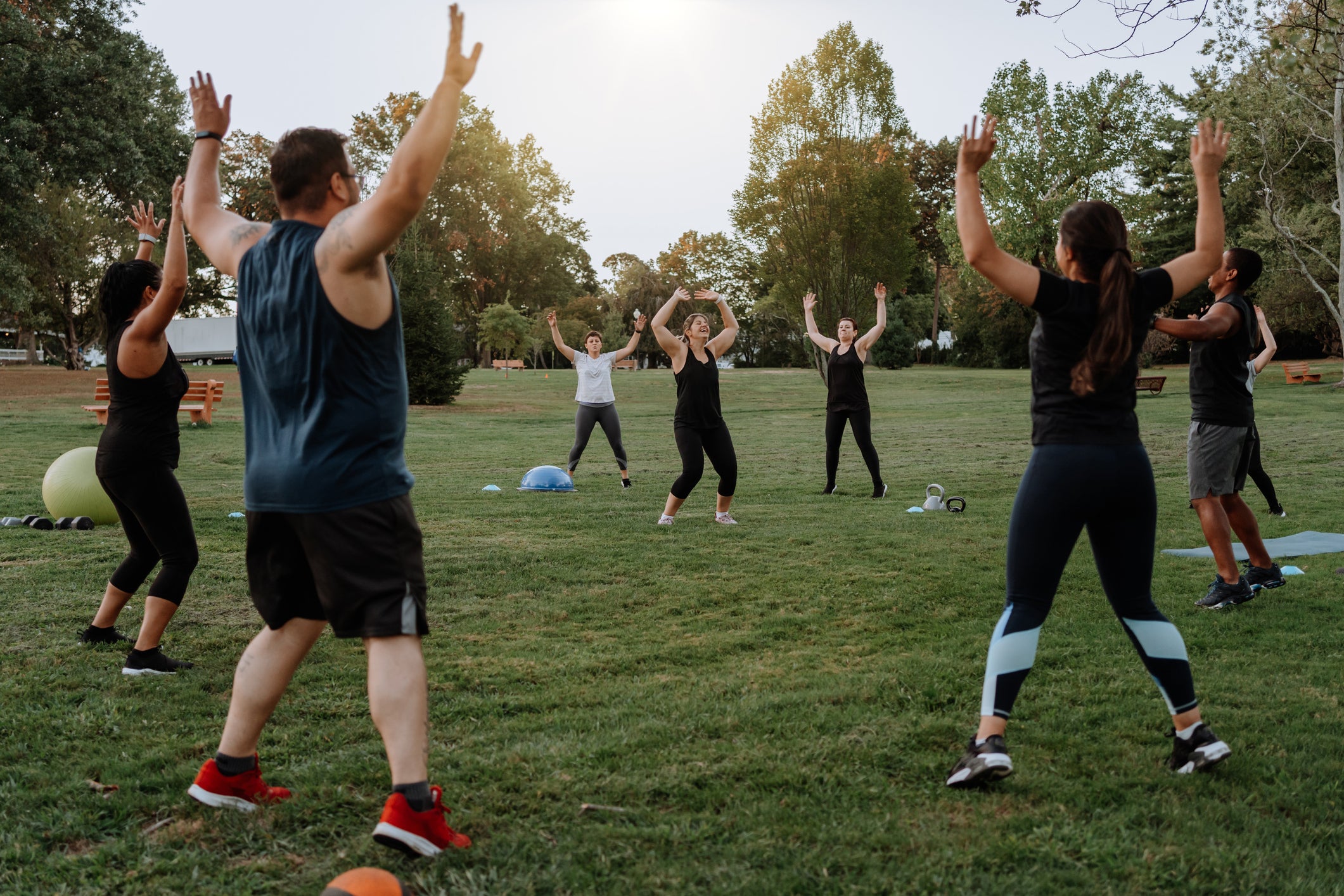Is ambivalence standing in the way of your healthy change?
You want to start exercising, but you don’t like to sweat. This conflicting feeling is called ambivalence, and it can be overcome, writes Stacey Colino

Your support helps us to tell the story
From reproductive rights to climate change to Big Tech, The Independent is on the ground when the story is developing. Whether it's investigating the financials of Elon Musk's pro-Trump PAC or producing our latest documentary, 'The A Word', which shines a light on the American women fighting for reproductive rights, we know how important it is to parse out the facts from the messaging.
At such a critical moment in US history, we need reporters on the ground. Your donation allows us to keep sending journalists to speak to both sides of the story.
The Independent is trusted by Americans across the entire political spectrum. And unlike many other quality news outlets, we choose not to lock Americans out of our reporting and analysis with paywalls. We believe quality journalism should be available to everyone, paid for by those who can afford it.
Your support makes all the difference.After losing 2st a few years ago, Rosanna Gill wanted to lose 10Ib more, but a few factors kept her from making the effort it would require. After all, she didn't need to drop additional weight for health reasons. Plus, she was already sticking with a healthy, balanced diet and was happy enough with how she looked.
As a result, Gill felt hesitant about changing her eating and drinking habits. It wasn't until she realised that her ambivalence was giving her an excuse “not to do something” that Gill, 35, a confidence coach and podcaster, vowed to take action. “I decided that feeling ‘meh’ about myself was reason enough to make some changes.”
Ambivalence, which essentially means having conflicting feelings about something, makes many people uncomfortable. But it is a normal part of change, experts say. “With every change, people have some ambivalence, because change means moving out of something you're comfortable or familiar with and into something that's not familiar. It disrupts the person's life a bit,” says Carlo DiClemente, professor emeritus in psychology at the University of Maryland Baltimore County and author of Addiction and Change.
Whether you want to lose weight, upgrade your diet, exercise more frequently, cut back on alcohol, quit smoking or something else, ambivalence about making that change will probably be part of the equation. Chances are, the ambivalence has less to do with the goal itself and more to do with the hard work and discomfort that may lie on the path to achieving it, says James E Maddux, professor emeritus in psychology and a senior scholar in the Centre for the Advancement of Well-Being at George Mason University in Virginia.
“Ambivalence doesn't have to be gotten rid of,” he says. “It has to be acknowledged, and when it pops up, it needs to be addressed in terms of what's behind it: Is it that you don't want to achieve this goal, or is the issue that it's too much work?”
In fact, experiencing ambivalence can be seen as a virtue, says William R Miller, emeritus distinguished professor of psychology and psychiatry at the University of New Mexico and author of the book On Second Thought: How Ambivalence Shapes Your Life.
So, if you want to improve your lifestyle habits or make other changes, it’s better to put your ambivalence to good use
“It's being able to see various options and possibilities and to choose among them,” Miller explains. “Ambivalence is actually a process of evaluation, comparing the relative positives and negatives of possible choices.”
By contrast, “if you ignore ambivalence, you won't have as strong a decision that leads to a solid commitment,” DiClemente says. Tamping down ambivalence also may lead you to “build a plan that doesn't address some of the negative pieces you're trying to avoid,” which could undermine your goal. Plus, DiClemente adds, “Ambivalence feeds procrastination.”
So, if you want to improve your lifestyle habits or make other changes, it's better to put your ambivalence to good use. Here's how:
Listen to your ambivalence. When you're considering making a change to your lifestyle or health habits, you may have a reason in mind, as well as a “yes, but” counterargument. For instance, you might want to start exercising regularly to improve your health and fitness levels, but you might also be saying to yourself: “But I hate to sweat!” Or, you might really want to lose weight, but you love food and dread feeling deprived. Research has found that writing about your ambivalence regarding an important goal significantly reduces the distress caused by ambivalence.

Clarify your values. Think about what matters most to you in life: autonomy, comfort, health, purpose, something else. Then, if you consider “how these values fit with your current behaviour and the change behaviour, you may find some foundation for making the change,” says DiClemente. “We're always in a state of negotiating with ourselves. Doing a moral inventory of the important values that are connected to this change can help.”
When Gill focused on the fact that she was often eating for emotional reasons or drinking alcohol to try to quell social anxiety or stress, that became the impetus for wanting to push through her ambivalence. As a confidence coach, “I don't want to give other people advice for how to make changes and build confidence if I haven't done it myself,” she says. So, she embraced her desire for authenticity, decided to go alcohol-free for the month of November, and began viewing her urges to eat and drink for emotional reasons as prompts to look closely at what was really bothering her.
Make a decisional balance chart. The simplest way to do this is to create a four-square matrix showing the advantages and disadvantages of making a change (such as quitting smoking) as well as the advantages and disadvantages of not making the change (continuing to smoke).
Among the advantages of making the change might be: reducing your long-term risks of heart disease, lung cancer and other diseases; saving money; and gaining stamina. Among the disadvantages of making the change might be: no longer being able to enjoy a habit that relaxes you or no longer socialising with smoking friends at work.

Among the advantages of not making the change might be: no withdrawal symptoms and holding on to a habit that relaxes you. Among the disadvantages of continuing to smoke might be: setting a bad example for your children and spending money on cigarettes. (It's okay if there's some overlap, because that's natural.)
“You may want to give importance to each one with a numerical weight, based on which things matter most among the things you listed,” says Miller. “What's helpful about the decisional balance chart is getting the big picture.”
Question your motives. A technique called motivational interviewing can help you explore your own reasons for making changes and get “out of the woods of ambivalence”, as Miller puts it. Although this has been studied in the context of working with a therapist, Miller says, you can also do this on your own or with a friend.
Consider the following questions: Why do I want to achieve this? Am I doing this to please myself or other people? If I decide to do this, how would I go about it in a way that would help me succeed? What are my three best reasons for doing this? What am I willing to do to make this change? What have I already done to take steps in this direction?
Keep in mind that, as Maddux says, “Research shows that people are more likely to pursue a goal if it's one they've freely chosen for themselves.”

Build a vocabulary of “change talk”. Recognising and revisiting your reasons for moving forward with a change can help you do this, says Mary Marden Velasquez, a professor and director of the Health Behavior Research and Training Institute at the University of Texas at Austin. “Pay attention to your 'change talk', and think about your desire, ability, reasons and need for making the change.”
If you want to start exercising, for example, you might use statements such as: “I want to be fit and active to play with my children or grandchildren”, “I enjoy tennis and could exercise by playing more often”, or “if I exercise frequently, I may be able to ditch my [blank] medication”.
Research has found that “change talk” significantly increased during motivational interviewing among people who had problem-drinking habits and contributed to a reduction in their drinking over an eight-week period.
Try the change on for size. “Begin acting as though this is what you've decided to do. Try it out and see what it feels like,” says Miller. This is a variation of the “act as if” and the “fake-it-til-you-make-it” principles. “Beyond what you say to yourself, seeing yourself do things moves you in the direction of making that change and strengthening your commitment,” Miller adds.
When her husband's doctor advised him to follow a low-carb diet for health reasons, Vered DeLeeuw thought she would benefit from reducing her carb consumption too. DeLeeuw, a self-described “carb addict”, was showing signs of hypoglycemia, which was worrying, because her mother has diabetes. “To say I was ambivalent about reducing my carb intake would be a gross understatement,” says DeLeeuw, now 50. Rather than trying to resolve the ambivalence, she committed to taking the plunge for two weeks: She purged their house of starchy snacks and sweets, and she began making low-carb meals to eat with her husband.
The change is “second nature now”, says DeLeeuw, a mother of two grown daughters who lives in Washington DC and is the founder of the Healthy Recipes blog. “To anyone who feels ambivalent about a health change they know they should make, my advice would be to just do it for two weeks, then see how you feel. If you're lucky, the rewards will motivate you to keep going.”
© The Washington Post




Join our commenting forum
Join thought-provoking conversations, follow other Independent readers and see their replies
Comments